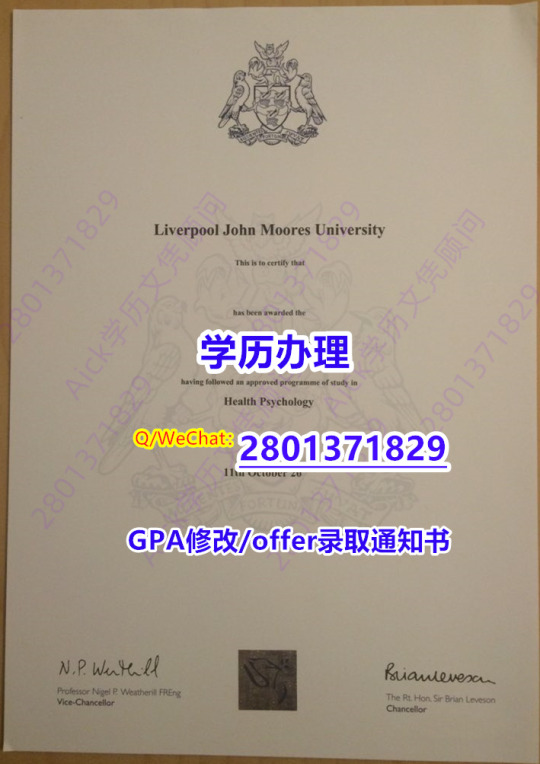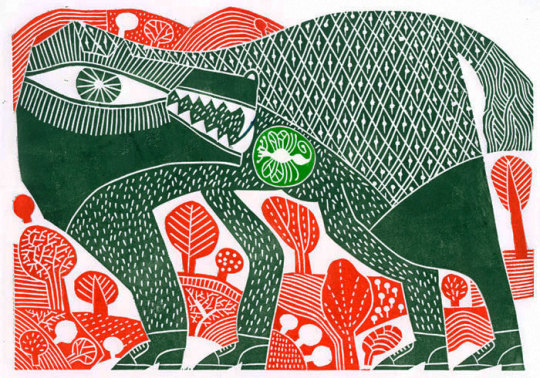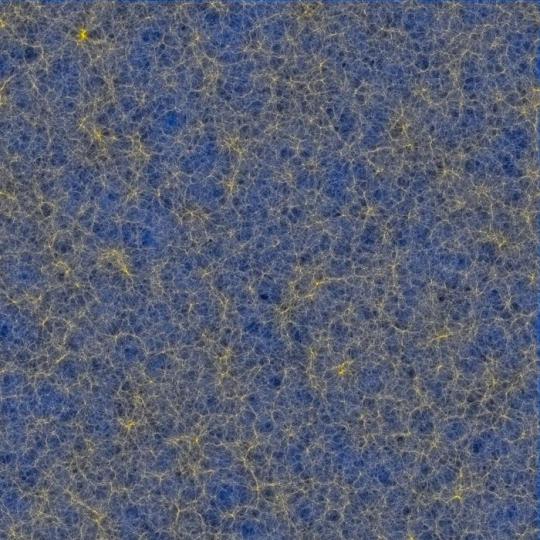#Liverpool John Moores University
Text
#Liverpool John Moores University#LJMU#IM Marsh Campus#higher education#undergraduate studies#postgraduate studies#professional courses#technical courses#Dance Studies#Sport Development#Physical Education#Applied Community Studies#Social Studies#Community Nutrition#Consumer Studies#Marketing#Food and Nutrition#Home Economics#Tourism Management#Education Studies#Outdoor Education#Adventure Tourism#OFSTED inspections#TTA category A status#PE secondary initial teacher education#Liverpool#LJMU popularity#quality teaching#personal tutoring#academic facilities
0 notes
Text
#pathway programmes#international students#study in uk#study in united kingdom#ljmu#liverpool john moores university#higher education
0 notes
Text
Apply Now: Liverpool John Moores University Postgraduate Scholarships For International Students 2023
Apply Now: Liverpool John Moores University Postgraduate Scholarships For International Students 2023
Liverpool John Moores University LJMU offer scholarships to postgraduate students wishing to study with us from overseas. These scholarships are in the form of tuition fee reductions and working alongside other external funding councils to produce many options for our students.
LJMU will award an exceptional student experience renowned for its high-quality teaching, innovation, student…

View On WordPress
#Apply Now: Liverpool John Moores University Postgraduate Scholarships for International Students 2023#Liverpool John Moores University Accreditation#Liverpool John Moores University admission#Liverpool John Moores University CAS#Liverpool John Moores University courses for International students#Liverpool John Moores University entry requirements#Liverpool John Moores University fees#Liverpool John Moores University isc#Liverpool John Moores University postgraduate open Day#Liverpool John Moores University ranking#Liverpool John Moores University scholarships for international students#LJMU scholarship application form#LJMU scholarship postgraduate#University of Liverpool scholarships for international students
0 notes
Text
主营LJMU毕业证成绩单,offer,学生卡留信认证,学历认证,结业证Q薇28 013 71829办理利物浦约翰摩尔斯大学本科毕业成绩单办LJMU学生ID卡/offer录取通知书.办LJMU本科毕业成绩单定制LJMU毕业证成绩单真实留信网认证(网上可查,永久存档,无风险,百分百成功入库)毕业证成绩单, 学历认证, 文凭, 学位证Liverpool John Moores University Diploma

#主营LJMU毕业证成绩单#offer#学生卡留信认证#学历认证#结业证Q薇28 013 71829办理利物浦约翰摩尔斯大学本科毕业成绩单办LJMU学生ID卡/offer录取通知书.办LJMU本科毕业成绩单定制LJMU毕业证成绩单真实留信网认证(网上可查,永久存档,无风险,百#文凭#学位证Liverpool John Moores University Diploma
0 notes
Text
本科办理LJMU硕士毕业成绩单Q/薇28013 71829办理利物浦约翰摩尔斯大学本科/硕士学生ID卡offer录取通知书,办LJMU学生ID卡/offer录取通知书,办LJMU【本科毕业成绩单】,办LJMU硕士毕业成绩单/留信认证,ECE认证/WES认证Liverpool John Moores University Diploma

#本科办理LJMU硕士毕业成绩单Q/薇28013 71829办理利物浦约翰摩尔斯大学本科/硕士学生ID卡offer录取通知书#办LJMU学生ID卡/offer录取通知书#办LJMU【本科毕业成绩单】#办LJMU硕士毕业成绩单/留信认证#ECE认证/WES认证Liverpool John Moores University Diploma
0 notes
Text
“It was an assumption—almost an article of faith—amongst many biogeographers, ecologists, and paleoecologists that the great regional rainforests were, at Western contact, the product of natural climatic, biogeographic, and ecological processes,” wrote paleoecologist Chris Hunt, now based at Liverpool John Moores University, and his colleague, Cambridge University archaeologist Ryan Rabett, in a 2014 paper. “It was widely thought that peoples living in the rainforest caused little change to vegetation.”
New research is challenging this long-held assumption. Recent paleoecological studies by Hunt and other colleagues show evidence of “disturbance” in the vegetation around Pa Lungan and other Kelabit villages, indicating that humans have shaped and altered these jungles not just for generations—but for millennia. Borneo’s inhabitants from a much more distant past likely burned the forests and cleared lands to cultivate edible plants. They created a complex system in which farming and foraging were intertwined with spiritual beliefs and land use in ways that scientists are just beginning to understand.
Samantha Jones, lead author on this investigation and researcher at the Catalan Institute of Human Paleoecology and Social Evolution, has studied ancient pollen cores in the Kelabit Highlands as part of the Cultured Rainforest Project. This is a U.K.-based team of anthropologists, archaeologists, and paleoecologists that is examining the long-term and present-day interactions between people and rainforests. The project has led to continuing research that is forming a new scientific narrative of the Borneo highlands.
People were most likely manipulating plants from as early as 50,000 years ago in the lowlands, Jones says. That’s around the time humans likely first arrived. Scholars had long classified these early inhabitants as foragers—but then came the studies at Niah Cave. There, in a series of limestone caverns near the coast, scientists found paleoecological evidence that early humans got right to work burning the forest, managing vegetation, and eating a complex diet based on hunting, foraging, fishing, and processing plants from the jungle. This late Pleistocene diet spanned everything from large mammals to small mollusks, to a wide array of tuberous taros and yams. By 10,000 years ago, the folks in the lowlands were growing sago and manipulating other vegetation such as wild rice, Hunt says. The lines between foraging and farming undoubtedly blurred. The Niah Cave folks were growing and picking, hunting and gathering, fishing and gardening across the entire landscape.
[...]
“The Cultured Rainforest project has shown how profoundly entangled the lives of humans and other species in the rainforest are,” says University of London anthropologist Monica Janowski, a member of the project team who has spent decades studying highland Borneo cultures. “This entanglement has developed over centuries and millennia and succeeds in maintaining a relatively balanced relationship between species.” Borneo’s jungle is, in fact, anything but untouched: What we see is a result of both human hands and natural forces, working in tandem. The Kelabit are a little bit farmer and a little bit forager with no clear line between, Janowski says. This dualistic approach to land use may reveal a deeper human nature. “Scratch any modern human and you will find, under the surface, a forager,” she says. “We have powerful foraging instincts. We also have powerful instincts to manage plants and animals. Both of these instincts have been with us for millennia.”
255 notes
·
View notes
Text





David Jones (b 1939) graduated from Liverpool College of Art in 1961 and it was here he first discovered his interest in printmaking. His tutor was the surrealist artist George Jardine. He won a John Moores travelling scholarship and spent time visiting various design studios across Europe. On returning to the UK he worked as assistant to graphic designers Jock Kinneir and Margaret Calvert. In 1965 -1967 he worked in Japan at Nakamoto International Agency, Osaka.
He returned to the UK and had a busy and successful career working freelance in graphic design, illustration and typography. He also worked as a visiting college lecturer at many of the countries leadings art schools. From 1979 he was a Senior Lecturer at Central Saint Martins (University of The Arts, London).
In the last twenty years he has returned to printmaking, in particular linocuts and wood engraving. He is influenced by Outsider art and Folk art. In 1989 he helped set up Raw Vision, a journal of Outsider Art. David is also a keen Semi-pro musician and plays the soprano saxophone. He hand prints his work in small editions and many of the images in his prints come from dreams.
https://rcaconwy.org/.../david-jones-rca-from-my-imagination
75 notes
·
View notes
Text

45 years ago today- Oct. 13 1978 - the physics and scientific community was shocked when budding astrophysicist Brian May and his colleagues discovered what actually makes the world go-round. Their work, entitled "Fat-Bottom Girls", was released on this date back in 1978.
Unfortunately, May, pictured below with friend and collaborator Eddie Van Halen, would not be awarded the Nobel Prize in Physics, despite his groundbreaking (pun intended) research into females with well-endowed posteriors. May would later earn his Ph.D in Astrophsyics from Imperial College London and would later serve as Chancellor of Liverpool John Moores University from 2008 to 2013.
52 notes
·
View notes
Text


Biggest ever supercomputer simulation to investigate Universe’s evolution
Astronomers have carried out the biggest ever computer simulations from the Big Bang to the present day to investigate how the Universe evolved.
The FLAMINGO simulations calculate the evolution of all the components of the Universe – ordinary matter, like stars and planets, dark matter and dark energy – based on the laws of physics.
As the simulations progress, virtual galaxies and galaxy clusters emerge in precise detail.
The team behind FLAMINGO, from Durham University, UK, Leiden University, the Netherlands, and Liverpool John Moores University, UK, hope the simulations will allow researchers to compare the virtual Universe with observations of the real thing being captured by new high-powered telescopes, like the James Webb Space telescope.
This could help scientists understand if the standard model of cosmology – used to explain the evolution of the Universe – provides a good description of reality.
The first research papers from FLAMINGO have been published in the journal Monthly Notices of the Royal Astronomical Society.
Previous simulations, which have been compared to observations of the Universe, have focused on cold dark matter - believed to be a key component of the structure of the cosmos.
However, astronomers now say that the effect of ordinary matter, which makes up only sixteen per cent of all matter in the Universe, and neutrinos, tiny particles that rarely interact with normal matter, also need to be taken into account when trying to understand the Universe’s evolution.
FLAMINGO Principal Investigator Professor Joop Schaye, of Leiden University, said: “Although the dark matter dominates gravity, the contribution of ordinary matter can no longer be neglected since that contribution could be similar to the deviations between the models and the observations.”
The FLAMINGO simulations tracked the formation of the Universe’s structure in dark matter, ordinary matter and neutrinos, following the standard model of physics.
The team ran the simulations at a powerful supercomputer in Durham over the past two years using different resolutions and also altered other factors such as the strength of galactic winds and the mass of the neutrinos.
The first results showed that the inclusion of ordinary matter and neutrinos in the simulations is essential for making accurate predictions.
New telescopes, such as the international “Dark Energy Survey Instrument” (in which Durham is a partner) and the European Space Agency’s Euclid space telescope, are collecting huge amounts of data about galaxies, quasars and stars, and these observations are posing questions about the theories behind current understanding of the evolution of the Universe.
Simulations like FLAMINGO will play a key role in interpreting this data by comparing theoretical predictions with observational data.
FLAMINGO research collaborator Professor Carlos Frenk, Ogden Professor of Fundamental Physics, in the Institute for Computational Cosmology, Durham University, said: “Cosmology is at a crossroads.
“We have amazing new data from powerful telescopes some of which do not, at first sight, conform to our theoretical expectations. Either the standard model of cosmology is flawed or there are subtle biases in the observational data.
“Our super precise simulations of the Universe should be able to tell us the answer.”
The simulations took more than 50 million processor hours on the Cosmology Machine (COSMA 8) supercomputer, hosted by the Institute for Computational Cosmology, Durham University, on behalf of the UK’s DiRAC High-Performance Computing facility.
To make the FLAMINGO simulations possible, the researchers developed a new code, called SWIFT, which efficiently distributes the computational work over thousands of Central Processing Units (CPUs, sometimes as many as 65,000.
The large amount of (virtual) data created by the simulations provides opportunities to make new theoretical discoveries and to test new data analysis techniques, including machine learning.
FLAMINGO is a project of the Durham-based VIRGO consortium for cosmological supercomputer simulations. The acronym stands for Full-hydro Large-scale structure simulations with All-sky Mapping for the Interpretation of Next Generation Observations.
Funding for FLAMINGO came from the European Research Council, the UK’s Science and Technology Facilities Council, the Netherlands Organization for Scientific Research and the Swiss National Science Foundation.
TOP IMAGE....A projection through a 130 million light years thick slice through a simulation of a cubic volume of 9,132 million light years on a side. The luminosity of the background image gives the cold dark matter surface density whilst the colour encodes the surface density of massive neutrinos. The filamentary cosmic web of large-scale structure is clearly visible. The fact that the colour changes more smoothly than the luminosity indicates that neutrinos cluster on larger length scales than cold dark matter. CREDIT Josh Borrow, the FLAMINGO team and the Virgo Consortium.
LOWER IMAGE....The background image shows the present-day distribution of matter in a slice through the largest FLAMINGO simulation, which is a cubic volume of 2.8 Gpc (9.1 billion lightyears) on a side. The luminosity of the background image gives the present-day distribution of dark matter, while the colour encodes the distribution of neutrinos. The insets show three consecutive zooms centred on the most massive cluster of galaxies; in order, these show the gas temperature, the dark matter density, and a virtual X-ray observation (Figure 1 from Schaye et al. 2023). Image credit Josh Borrow, the FLAMINGO team and the Virgo Consortium.
18 notes
·
View notes
Text

"The skull was as flat as a pizza, basically," said Professor Graeme Barker
An absolute astonishing discovery and work by a team of British archaeologists who managed to reconstruct a 75,000 years of Neanderthal woman skull
Dubbed Shanidar Z, discovered in the Shanidar cave in the Kurdistan Region.
The groundbreaking discovery offers fresh insights into the lives of Neanderthals and challenges previous perceptions of their intelligence and behaviors.
Shanidar Z, named after the cave where her skull was unearthed in 2018, represents a significant find in the study of Neanderthals. Led by researchers from the University of Cambridge and Liverpool John Moores University, the excavation sheds light on ancient burial rituals and Neanderthal culture.
The discovery rekindles interest in the work of American archaeologist Ralph Solecki, who first unearthed Neanderthal remains in the same cave in the 1960s. Solecki's findings, which included the remains of multiple Neanderthals and evidence of burial practices, suggested a level of sophistication previously unrecognized in these ancient hominids.
Despite political challenges delaying further exploration for decades, the recent excavation allowed researchers to delve deeper into Shanidar Z's story. Her remarkably preserved skull, flattened to a thickness of 0.7 inches, offers unprecedented insights into Neanderthal anatomy and behavior.
Dr. Emma Pomeroy, a palaeo-anthropologist from the University of Cambridge, described the discovery as a privilege and emphasized its potential to deepen our understanding of Neanderthal life. "It's extremely exciting and a massive privilege actually to be able to work with the remains of any individual but especially one as special as her," she told BBC News.
The team's return to the Zagros mountains in the Kurdistan Region underscores the significance of ongoing research in unlocking the mysteries of human evolution. "The skull was as flat as a pizza, basically," said Professor Graeme Barker from Cambridge's McDonald Institute for Archaeological Research, highlighting the remarkable preservation of Shanidar Z's remains.
Neanderthals, who disappeared from the Earth around 40,000 years ago, continue to fascinate scientists and the public alike. Each new discovery, such as Shanidar Z's reconstructed face, adds layers to our understanding of these ancient relatives and their place in the human story.
As archaeologists continue to analyze Shanidar Z's remains and unearth new discoveries, their findings promise to reshape our understanding of Neanderthal life and their interactions with early humans.
Source: https://www.basnews.com/en/babat/847393
Image: 3D images of Shanidar Z can be seen in the BBC documentary «Neanderthal Secrets» broadcast on Netflix
Source: Facebook
The Tudor Intruders
3 notes
·
View notes
Text
Whether it is a hug from a friend or the caress of a weighted blanket, the sensation of touch appears to bring benefits for the body and mind, researchers say.
The sense of touch is the first to develop in babies and is crucial in allowing us to experience the environment around us as well as communicate. Indeed, the loss of touch from others during the Covid pandemic hit many hard.
However, while myriad studies have suggested touch is beneficial for our health, few have attempted to draw the vast field of research together.
Now experts have done just that, revealing a simple message: touch helps.
Dr Helena Hartmann, a co-author of the research from University Hospital Essen, said: “More consensual touch events throughout our day can help alleviate or potentially buffer against mental and physical complaints.”
Published in the journal Nature Human Behaviour, the research encompassed 212 previously published studies and included a statistical analysis of 85 studies involving adults and 52 involving newborns.
Among the results, the team found touch was just as beneficial for mental health as physical health – a finding that held for adults and newborns – although touch had a bigger impact on some areas than others.
“Our work illustrates that touch interventions are best suited for reducing pain, depression and anxiety in adults and children as well as for increasing weight gain in newborns,” the researchers write.
The analysis revealed humans gained similar benefits in terms of their physical health when touched by other humans as by objects – such as social robots or weighted blankets.
Hartmann said that was a surprise. “This means we need to undertake more research on the potential of weighted blankets or social robots to improve people’s wellbeing, especially during contact-limiting situations like the recent Covid-19 pandemic,” she said.
The positive impact on mental health was larger for human touch than touch from objects – possibly, the team said, because it involved skin-to-skin contact.
Among other results, the team found touch was beneficial for both healthy and unwell people, although the impact was larger among the latter for mental health benefits.
The type of touch and its duration was not important, although greater frequency was associated with greater benefits in adults.
Further, touching the head was associated with greater health benefits than touching other parts of the body.
The team cautioned that some of the findings could be false positives, while it was not clear if they would hold across different cultures.
Dr Mariana von Mohr, from Royal Holloway, University of London, who was not involved in the work, said if future robots could more accurately replicate the texture and warmth of human skin, they may be able to provide comparable mental health benefits to human touch.
“[These properties are] important because our skin contains specialised sensors, known as C-tactile afferents, which are particularly receptive to gentle, caressing touch and temperature similar to that of human skin, factors that are also thought to facilitate emotional regulation,” she said.
Prof Katerina Fotopoulou, at University College London, said the research gave a bird’s-eye view of the benefits of touch interventions on health.
She cautioned that the work could not offer more specific conclusions, such as the particular types of touch that may be associated with specific health benefits.
Dr Susannah Walker, at Liverpool John Moores University, agreed, noting that many of the studies considered were small and included varied types of touch and different measures of their outcomes. “This means it is hard to draw firm conclusions about why they work,” she said.
Fotopoulou added that the research could fuel new work in the field, including how touch could be used alongside other treatments.
“It is a historical misfortune that we have prioritised talking over touch or other somatic therapies in the past couple of centuries. This review gives us the necessary emphasis and confidence to redress this balance with further, careful study on touch interventions,” she said.
3 notes
·
View notes
Text
According to a Live Science report, a new study has suggested that the pollen once thought to have belonged to flowers deposited by Neanderthals in Iraqi Kurdistan's Shanidar Cave was actually left there by insects. Paleoecologist Chris Hunt of Liverpool John Moores University said that previous interpretations that the pollen came from flowers that were collected by Neanderthals to be buried with a deceased member of their community was more likely deposited by bees. Hunt explains that the bees might have burrowed into the dirt on the cave floor, leaving pollen they had collected there as they dug in.
Since the 1950s and 1960s when the caves of Shanidar were first excavated, the flowers have been thought to be evidence of Neanderthals engaging in deliberate burial rituals.
Hunt believes that while the pollen may not have been part of a burial ritual, that does not negate the possibility that the Neanderthals living in the area engaged in this type of symbolic behavior.
10 notes
·
View notes
Text
Gone is the stereotype of Neanderthals tearing into raw tubers or gnawing on a leg of roasted animal meat. Microscopic analysis of ancient food scraps unearthed from a hearth in Shanidar Cave, in Iraq, has provided the first real indication of complex cooking – and thus of food culture – among Neanderthals.
According to Dr Ceren Kabukcu, of the University of Liverpool, who carried out the analysis, a typical dish would probably have contained a pounded pulp of pulses, nuts and grass seeds, bound together with water and flavoured with bitter tannins from the seed coats of pulses such as beans or peas, and the sharp taste of wild mustard.
Gathering such ingredients must have been time-consuming. “There are lots of species out at Shanidar in the savannah-type vegetation, and I’d guess the Neanderthals would have gathered whatever they came across and cooked with it,” said Prof Chris Hunt, of Liverpool John Moores University, who coordinated the excavation.
While lacking easy access to a savannah, I do have the convenience of several health food shops and a Turkish mini-mart within minutes of my house. Sadly, these didn’t stock terebinth (wild pistachio) or bitter vetch (a legume), but commercial raw pistachios and puy lentils provided acceptable substitutes.
Tucked away at the back of our larder, I found a half-empty packet of fava beans with a use-by data of 2010 – not quite neolithic, but ancient enough.
Kabukcu and Hunt suggested combining these – or other types of dried beans or peas (not marrowfat) – with an ancient whole grain such as spelt, einkorn wheat berries or barley, in default of grass seed. Neanderthals also used wild almonds and mustard seeds in their cooking.
Interesting to see that they were able to identify bitter vetch among the pulses consumed by Neanderthals. I know the plant (I think specifically the root?) was used in medieval Scotland as an appetite suppressant during lean times. I wonder if our hominid cousins ever used it this way too.
32 notes
·
View notes
Text
Prehistoric cooking may have been more complex than we thought, according to a study published last week in the journal Antiquity.
Researchers analyzed charred food remains at two locations—the Shanidar Cave in Iraq’s Zagros Mountains and the Franchthi Cave in Greece—to gain insight into how Neanderthals and early modern humans prepared food. They found evidence of cooking involving a variety of ingredients, processes and deliberate decisions.
“Our findings are the first real indication of complex cooking—and thus of food culture—among Neanderthals,” Chris Hunt, an expert in cultural paleoecology at Liverpool John Moores University and coordinator of the excavation, tells the Guardian’s Linda Geddes.
At the Shanidar Cave, the researchers analyzed food remains from approximately 70,000 years ago, when Neanderthals lived at the site. They also analyzed remains from around 40,000 years ago, when early modern humans lived there. At the Franchthi Cave, they analyzed food remnants that early modern humans who were hunter-gatherers consumed some 12,000 years ago.
At both archaeological sites, researchers identified similar plants and culinary practices, which may point to a shared food culture, says lead study author Ceren Kabukcu, an archaeobotanical scientist at the University of Liverpool, to CNN’s Katie Hunt.
The researchers’ analysis suggests that early modern humans and Neanderthals weren’t just consuming protein from animals; they had complex diets that consisted of a wide selection of plants and varied depending on location. They also used “a range of tricks to make their food more palatable” such as soaking and pounding, per a statement from the University of Liverpool.
“This study points to cognitive complexity and the development of culinary cultures in which flavors were significant from a very early date,” says Kabukcu in the statement. “Our work conclusively demonstrates the complexities in the early hunter-gatherer diet which are akin to modern food preparation practices. For example, wild nuts and grasses were often combined with pulses, like lentils, and wild mustard.”
John McNabb, an archaeologist at the Centre for the Archaeology of Human Origins at the University of Southampton who was not involved in the research, tells CNN that our knowledge of the Neanderthal diet has greatly evolved “as we move away from the idea of [Neanderthals] just consuming huge quantities of hunted game meat.”
“More data is needed from Shanidar, but if these results are supported then Neanderthals were eating pulses and some species from the grass family that required careful preparation before consumption,” he adds. “Sophisticated techniques of food preparation had a much deeper history than previously thought.”
To further understand the Neanderthal diet, Hunt and his colleagues tried to recreate—and eat—a similar recipe using seeds found near the caves.
How did their creation turn out? Hunt tells the Guardian, “It made a sort of pancake-cum-flatbread which was really very palatable—a sort of nutty taste.”
8 notes
·
View notes
Text
Universities are docking lecturers’ entire pay for not marking a few exams
“On 20 April, a national marking and assessment boycott began at 145 universities as part of a long running dispute over pay and conditions. The University and College Union (UCU) action will see staff cease all exam invigilation, the setting and marking of exams and essays, and processing of grades ...
“University staff taking part in this year’s marking and assessment boycott will still carry out the rest of their duties, which usually include teaching, research, supervision, and administration. Nevertheless at least 60 universities have threatened to deduct between 50 and 100% of the wages of staff taking part in the boycott.
“The University of Bristol is threatening to deduct 50% of the wages of staff taking part in the boycott, while reserving the right to escalate deductions to 100% should the boycott ‘significantly impact student experience’, a term staff believe is purposefully vague ...
“SOAS University, Middlesex University, University of Suffolk, Liverpool John Moores, University of Sheffield, University of Leeds, and University of Cardiff are among some of the universities threatening to deduct 100% of staff wages.”
#lecturers strike#striking lecturers#strikes#strikers#right to strike#lecturers#university management#bad employers#universities#higher education#education#ucu#trade unions#unions#uk#europe
9 notes
·
View notes
Text
Introducing Building Islam!
Hi all and welcome to Building Islam!
My name is Summer and this blog is in direct conjunction with my final year major project at Liverpool John Moores University. This blog aims to serve as a resource for all things Islamic architecture, from the introduction of it around the 7th century, to its modern transition into the Western world. Questions and queries are happily accepted in the form of private messages or simple comments! With each and every blog post, there will be a conscious effort to improve the following based on a group of fellow History of Art students that will gather every week to review my research and work. They will provide feedback and advice for the future posts and help improve my standards of not only research but writing, too. There will be 1-2 blog entries produced every week shedding light and sharing information and opinions on some of the most impressive architectural structures, and architects to date (in my opinion). All interactions with this blog will be highly appreciated and monitored for tracking purposes and hopefully this blog serves as a resource for like minded curious people! A bibliography will be provided at the end of every post to give access to further information and resources for the curious reader!
Thank you for your time and I hope you enjoy!
Summer Marshall-Miller
#architecture#introduction#islamic#islamicarchitecture#informative#research#student#university#liverpooljohnmooresuniversity#history#history of art
14 notes
·
View notes